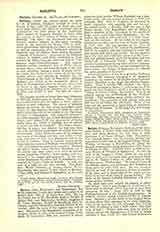

Barlow (alias RADCLIFFE and BRERETON), EDWARD AMBROSE, VENERABLE, priest and martyr, b. at Barlow Hall, 1585; d. September 10, 1641. He was the fourth son of Sir Alexander Barlow, Knight of Barlow Hall, near Manchester, by Mary, daughter of Sir Uryan Brereton, Knight of Handforth Hall, Co. Chester, and was baptized at Didsbury Church November 30, 1585; the entry in the register may still be seen. Educated at the Benedictine monastery of St. Gregory, Douai, he entered the English College, Valladolid, September 20, 1610, but returned to Douai, where his elder brother William Rudesind was a professed monk. He was himself professed in 1616 and ordained, 1617. Sent to England, he labored in South Lancashire with apostolic zeal and fervor. He resided chiefly at Wardley Hall, the seat of the Downe family, near Manchester, and at Morley’s Hall, a mansion of the Tyldesleys, in the parish of Leigh, some seven miles from Manchester. At the former, his skull is still preserved, in a little receptacle on the staircase. At the latter he was apprehended for the fifth and last time on Easter Sunday, April 25, 1641. He was arrested by the Vicar of Eccles, who marched at the head of his parishioners, clad in his surplice, and was followed by some 400 men armed with clubs and swords. He was preaching at the time and could have escaped in the confusion, but yielded himself up to his enemies, and was carried off to Lancaster Castle. Here after four months’ imprisonment he was tried, on 6 or September 7, and sentenced next day, having confessed that he was a priest. On Friday, September 10, he suffered the usual penalties at Lancaster.
A beautiful picture of his life is given by Challoner from two MS. relations belonging to St. Gregory’s monastery, one written by his brother Dom Rudesind Barlow, President of the An lo-Benedictine Congregation. There is another MS., entitled “The Apostolical life of Ambrose Barlow”, written by one of his pupils for Dom Rudesind, which is at present in the Library of Owen’s College, Manchester. It is to be printed among the publications of the Chetham Society. This contains many details hitherto unpublished. Two portraits of this martyr exist and also one of his father, Sir Alexander. Many of his relics are also preserved, a hand being at Stanbrook Abbey near Worcester. A full biography is in course of preparation.
BEBE CAMM

